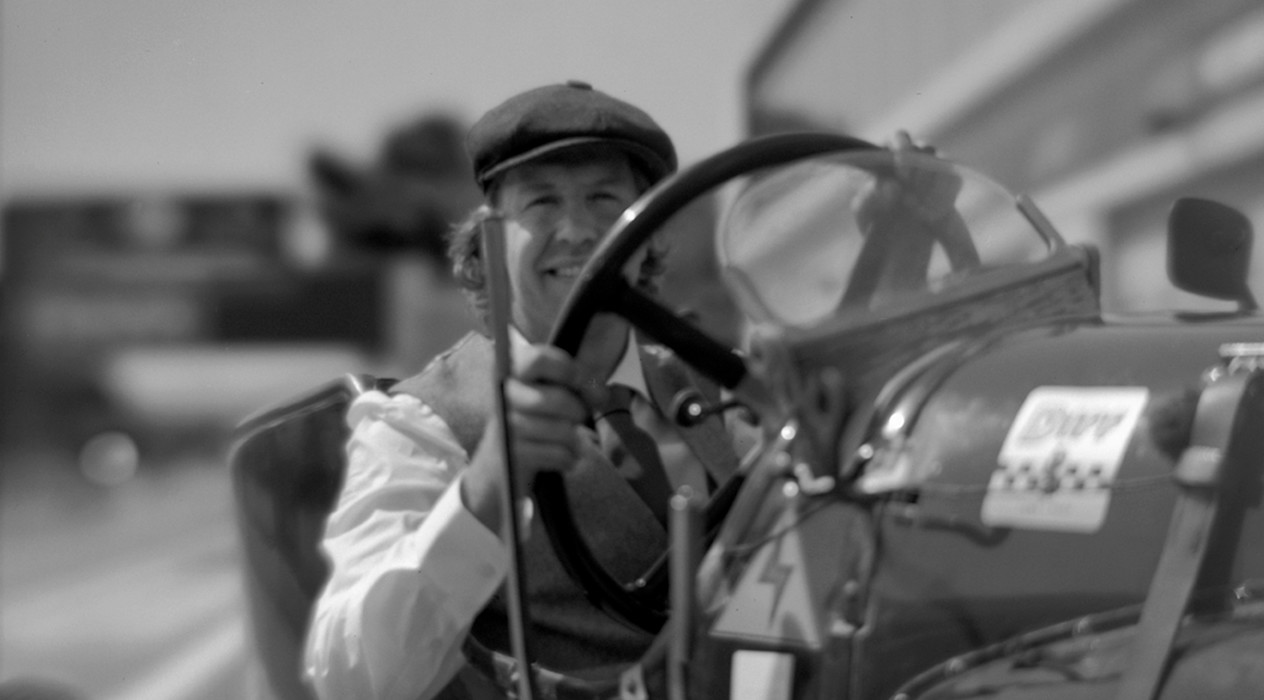
At the 2022 French Grand Prix, Aston Martin rolled back the years with a demonstration run of the iconic 'Green Pea' race car from 1922, celebrating 100 years since the marque's Grand Prix debut.
To capture the moment and provide a unique perspective on an iconic racing centenary, Aston Martin enlisted renowned photographer, Joshua Paul, and his 100-year-old camera.
Adapted to run on synthetic fuel, developed by Aramco and P1, Green Pea’s landmark outing proved that classic automotive technology can still be relevant in modern-day motorsport.
It wasn't the only piece of technology in the paddock celebrating 100 years of use, either, as Brooklyn-based photographer Joshua Paul captured the moment on his 1913 Graflex camera.
Here, we discover the stunning imagery captured by Joshua to commemorate Aston Martin's Grand Prix centenary and learn how to use a 100-year-old camera at a modern-day Formula One event.
"I often spend two practice sessions in the pitlane as well as going out on track. I just want to get as close to the cars as possible. This image is Sebastian exiting the garage. I had to position myself hoping the car landed in my pre-positioned frame; you obviously can't take multiple frames quickly with film. I had it set at about 1/15th or 1/20th of a second exposure. Luckily, I managed to get the image sharp.
"It's a clean and almost classic image. People watch me operate my camera and it does look very complicated, but it's not really. It's a series of movements; I bring the mirror back, I rewind the shutter, I change the film, I decide on the shutter speed. It's five or six steps, and that's it."

"In this picture, Sebastian has just pulled up, and immediately the mechanics attack the car with the cooling systems, get the wheels off, get the driver out of the car and cooled off. I love these moments of action. This is the closest proximity I can get to the car during a race weekend as it's always so hectic and chaotic. I often just stand still so I don't get in the way.
"In Monaco this year, one of the mechanics ran into me and my camera went flying. We both stood there with our mouths open watching it fall in slow motion, but thankfully, I caught it. It was nobody's fault – what they're doing is much more important than me, so I try to step aside and watch from the side lines."

"This was taken on the Thursday during the pitstop practices. This is one they do where the fans can watch, so there are hundreds of cameras on the car already. I love the action of it. Watching the running of the garage and how they perfect every step to make sure every millisecond counts: it's always fascinating to see.
"In these timeless images, you don't need to know exactly what it's going to look like until you see the photo developed – the action will still be there. I spend a lot of time retouching the images as there are always specs of dust and debris on the negatives. But that's what gives it the retro style and charm."
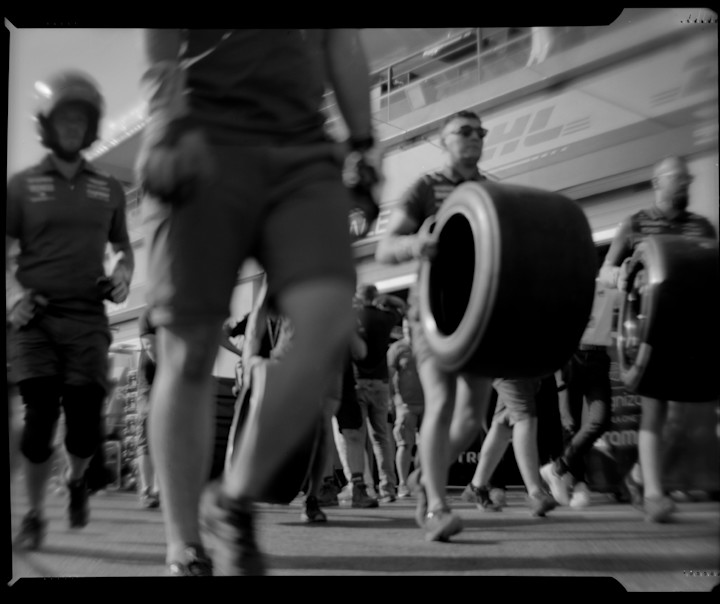
"I use an 1880s brass lens and like to have the aperture fully open, so it keeps the centre of the image sharp. It creates a natural vignette and an effect called a 'follow focus'. When I went to my first Formula One race, the Spanish GP in 2013, I had a digital camera and shot thousands of frames – I had over 5,000 photos to look at. I couldn't get enough!
"I wanted to show every moment of an F1 race for those who don't get to see it for themselves, or only get to go once in a lifetime. I tried to record the same moment over and over – but it's always something different."
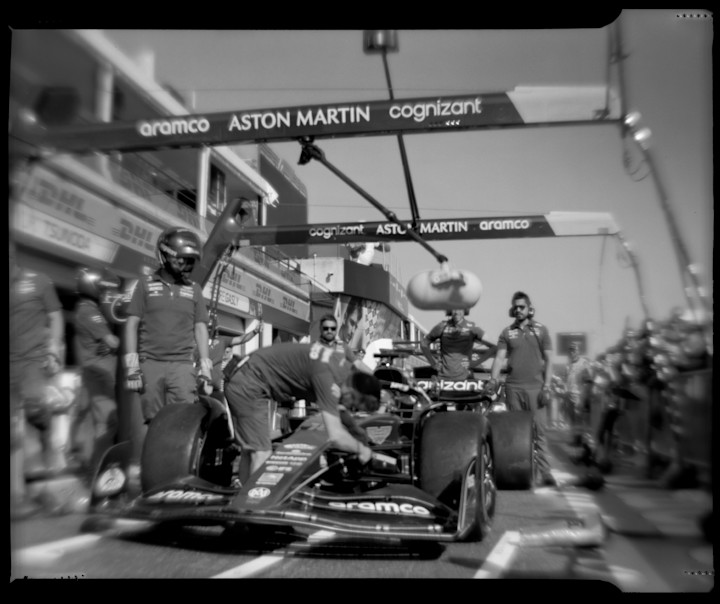
"Using this camera to shoot the Green Pea really is the perfect match; this camera would have definitely been used at the time for real on-track racing photography in the 1920s. It's amazing.
"I didn't have any control on where the car was going to be while I was photographing it, so I would have liked to play around with some of the angles more and try to focus in on different areas. But we're not trying to pretend this photo was taken 100 years ago in a perfect set-up; that's the magic of it."

"There were so many people around the car at the time, TV presenters and camera crews. I shot four or five frames, but they had people in the background, which ruined the atmosphere of the photo. Luckily, I got this shot where the car is the sole focus of the frame. I like how the tyres on the right-hand side go out of focus; if you look at old photographs, they're all like this, where the focus doesn't matter too much.
"I didn't see a picture of the Green Pea until a few weeks ago, and thought it was beautiful. When I was in art school, we talked about design, about cars, furniture etc, and you can see what has gone into this car. The square grille in the front with the rounded edges, all of the elegant sculpting, yet still as light and streamlined as possible on the track; it's as beautiful as imaginable."
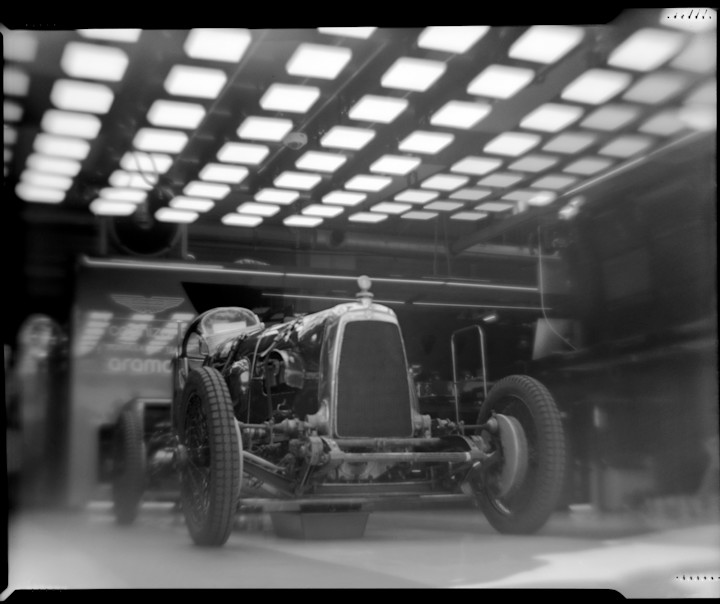
"It was awesome to see the team recreate a pitstop practice with the Green Pea. There are no wheel guns – it's done with mallets! Where I was standing for this photo, the sun was coming right at the camera, so all I could see was the silhouette. Usually, when you shoot with so much light, the blacks will all just be black.
"But, with the magic of using film, when I saw how the final photo looked, I was so pleased at the detail you could see. I didn't think it would do this beautiful car justice, but I'm super pleased with how it all came out. This camera still surprises me!"
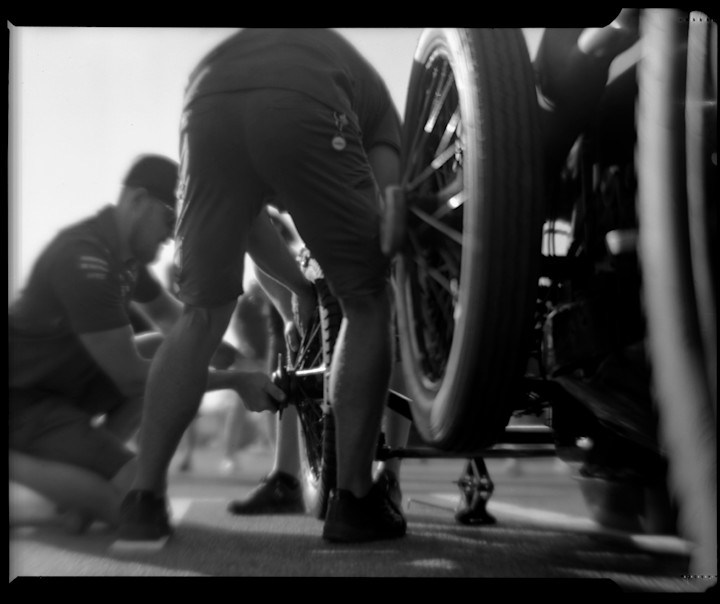
"I'm not going to lie – I never feel 100% secure about my shots. For the photoshoot, I thought it was going to just be me and the car, and maybe Sebastian if we had enough time. I didn't anticipate just how many people would be there and how little time I'd have to get the right shot. I was nervous about getting in the way, but Seb was so relaxed and having a good time with the car.
"The sun was in my eyes, so I couldn't see the camera properly; I thought it looked kind of muddy, like looking through dirty water. I thought, 'Man, I don't have much time with this'. But I got it. Was Seb blinking? What was his expression? Was he perfectly in focus? Honestly, there's so much luck to this, so you have to take risks. There were so many cameras around that, if I failed the shot, we'd be able to find one that worked. But, in the end, I love this photo. He just looks so happy."

"I can't believe this even came out! We were told that Seb was going to drive a lap. Actually, it was supposed to be two laps, but the guys spent so long talking to the owner and learning how it all worked that we ran out of time! So, my idea to take images of the car driving away with diminishing perspective sadly didn't happen.
"Instead, I just turned the camera and pushed the button as the car left the garage, and that was the shot. In ten seconds, it was all over. But to me, this is perfect. I love that it's blurry and out of focus. It's really important to me to show the wheels turning and showing the motion. It's motor racing, after all!"
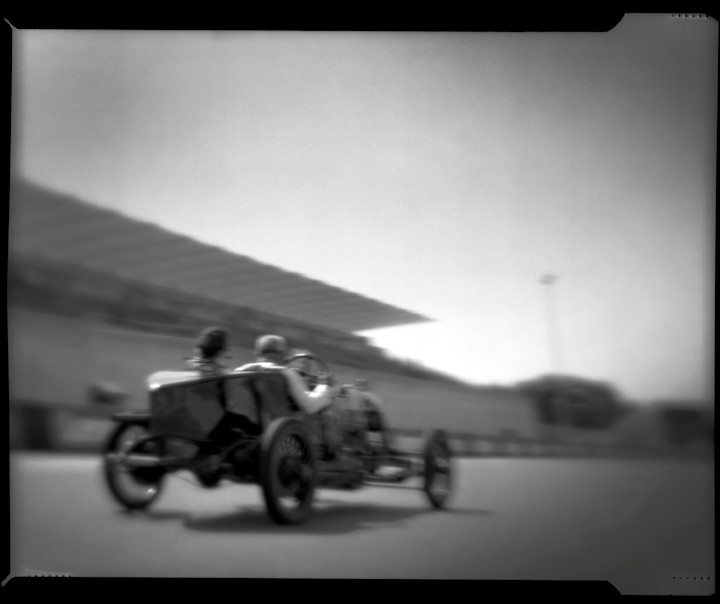
"That's the cool thing about photography; it's like relistening to the lyrics of a song you've known for 20 years. You've always loved the song, but now you love it even more because you know the words and you can understand it even more."
Learn more about Joshua and his photography at www.lollipop-gp.com.
Access I / AM to get closer to the team.




























